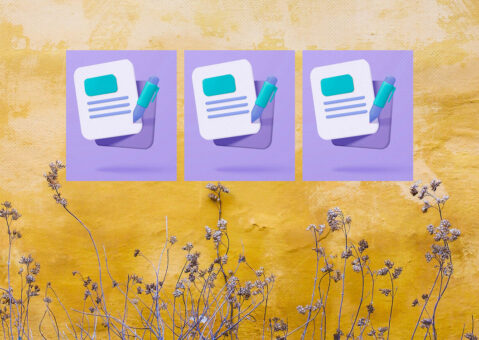David Bollier is an American writer, blogger, and activist who focuses on the commons as a paradigm to reinvent the economy, politics, and culture. He is a director of the Reinventing the Commons Program at the Schumacher Center for New Economics (USA). He is also one of our advisors at P2P Models.
David Rozas is a Spanish social researcher and computer scientist. His research focuses on the intersection between the technical and social aspects of technology, particularly in the context of the collaborative economy, commons-based peer production, and the future of work. He is currently working as an Assistant Professor at the Complutense University of Madrid. In his latest research, in the context of the project P2P Models, he is exploring the potentialities and limitations of blockchain to experiment with alternative models of governance and distribution of value in the platform economy.
How would you define what commons are in order for people to understand them in a simple way?
David Bollier: Well, there are certain social dimensions that are common to all Commons. A Commons arise when people decide to steward shared wealth themselves directly with a commitment to fairness, sustainability, social solidarity, and participation. My colleague, the late Silke Helfrich, and I elaborated on that in our book Free, Fair, and Alive with the methodology of patterns of commoning, which draws upon Christopher Alexander’s “pattern language” methodology. We distilled the most basic elements of commons into three interrelated spheres: Social life, Peer Governance, and Provisioning. And within each of those, there are a number of different patterns of behavior and attitudes that tend to recur in Commons no matter what “resources” are being managed.
We built on the paradigm of Commons developed by the late Elinor Ostrom, but we reimagined them as robust social systems. Ostrom worked from the perspective of the rational-actor school of economics and a focus on resource management at small scales. So she worked within a limited analytic framework and did not engage with political economy. Silke and I wanted to reframe the Commons almost in an anthropological or sociological sense, as opposed to defining it primarily as a resource or its property rights. To the extent that Ostrom and many other commentators, economists, and politicians focus on the Commons as chiefly a resource, it shifts attention to social and political questions of how a Commons organises itself into the background. It adopts the standard rational actor frame of Homo economicus and puts into the background the contestable, negotiable, circumstantial ways in which social governance emerges.
David, could you fit some of the patterns that you have described into a digital description?
DB: Absolutely. I think that there are a number of problems. One, many people still approach digital Commons from the resource perspective, and so they don’t adequately address the social dimension. And second, a lot of open platforms are conflated with a Commons, meaning if it is an open platform, there is an assumption that anybody should be able to use it, without paying attention to the social dimensions of stewardship and curation of a Commons. A Commons doesn’t take care of itself, but that’s essentially what the idea of an “open platform” presumes. My book with Silke Helfrich, Free, Fair and Alive,” has a sidebar of a few pages, on page 68, where we discuss the differences between open platforms and Commons and why it’s important to talk about them. The open/closed binary doesn’t allow you to talk with more subtlety about the in-between “social zone” of how a Commons management can make code, information, or creative works open to some people under some circumstances, but close to other people under other circumstances. Unlike an open platform, a commons can allow the sale of the resource under stipulated circumstances but reject that for other circumstances – all, with an eye toward protecting the long-term integrity of the Commons. The open/closed binary doesn’t allow that field of discussion. It simply ascribes ownership and usage capacities to the resource itself rather than looking to the community to make those choices. So, those are complications you immediately encounter when applying the Commons to a digital context.
I think digital Commons need to apply the same patterns that any other Commons do, as outlined in what we call the Triad of Commoning, i.e., the recurrent patterns of social life, peer governance, and provisioning in a commons. Commons also need the rules that Ostrom mentions to help ensure that people do not disrupt or vandalise them. I would add that sometimes commoners need state law as a backup to authorize commoning in the first place, or at least decriminalise it because the state is generally more eager to protect the interests of investors and markets than those of commoners.
David, what kind of potentialities does the blockchain offer to the commons-based communities?
DB: I think it offers huge potential. Unfortunately, I think the whole image of the blockchain has been captured by Bitcoin and other commercially oriented crypto-currencies, most of which have the ontological framework of transactional individualism. They are therefore susceptible to the usual capitalist pathologies of speculation, private extraction and gain, and so forth, as opposed to cooperation, sharing, and collective gain.
So, while the blockchain as a technology has affordances that could enable commoning, many, if not most, tech people who are engaged with it tend to be Silicon Valley libertarians. They don’t have worldview values, motivations, or institutional support to explore alternative, commons-oriented ways of using distributed ledger technologies. Having said that, I can think of three actual examples that use the blockchain in progressive-minded ways:
First, the Schumacher Centre for New Economics in western Massachusetts recently launched a digital currency that extends their existing paper currency called BerkShares. It is a blockchain-based digital version of their paper currency that is designed to be a regional-only currency. It is a really interesting experiment that shows how blockchain can be used in energy-efficient ways to create value. Some of that value is used to keep the whole system running smoothly; some is used to lower transaction fees below the 3-4% rates charged by credit card companies, and some will be used to create a fledgling university basic income fund.
A second interesting example is the public art projects developed by Furtherfield, an arts collective in London that often uses digital technology in connection with public art projects, often in collaborations with the public. Their tech doesn’t necessarily use the blockchain, but they have developed an interesting “quadratic voting” exercise in which the public is invited to vote on which project ideas to develop. Furtherfield has also hosted a laboratory and series of debates among artists and techies about how blockchain software could help reinvent the arts in an age of networks. The point was to explore how the cultural sector could develop “pathways to peer-produced decentralised digital infrastructures for art, culture, and society – in particular through Decentralised Autonomous Organisations (DAOs) …” Their goal is to “end gatekeeping and elitism in the art world” and “bring this spirit of deep and radical friendship as a way to build resilient and mutable systems for scale-free interdependence and mutual aid.”
Third, I’m really fascinated with the Holochain approach, which uses a set of robust networking protocols that are more versatile in facilitating networked interactions than the blockchain. The Holochain project aspires to help secure, authenticated identity and commoning to flourish in online contexts, which is obviously much more interesting than frictionless, ubiquitous commercial applications. They have a project called the Commons Engine – https://commonsengine.org/about – that Fernanda Ibarra is helping to develop.
So, I think the blockchain can be an important infrastructure to help commoning, but it requires a different sensibility than customary blockchain and crypto projects. It not only needs an enabling network of people, it needs the social practices and culture of any commons. Without that awareness and social commitment, the blockchain is prone to the usual risks posed by monetization and marketization, namely speculation, centralized control through market consolidation, and the privileging of capital accumulation over egalitarian participation and constructive non-market uses.
“
The whole social dimensions of the stewardship and curation of a Commons don’t really get adequate attention.
Rozas, do you have anything to add?
David Rozas: I completely agree with David [Bollier] on several points he made. Firstly, on the hegemony of individualistic values within the crypto-sphere. When I started working in P2PModels and exploring the literature back in 2018, these individualistic values – mixed with a strong sense of techno-determinism – were already hegemonic in the literature. Reductionist ideas such as, for example, that using decentralised technologies might immediately imply a decentralisation of power when, indeed, one can argue that sometimes the effect is precisely the opposite.
At the same time, I also agree with David [Bollier] that there are plenty of potentialities of blockchain technologies concerning fostering commoning and cooperative practices. Personally, my position towards blockchain, in general terms, is one of skepticism. I see blockchain as an object of study that offers plenty of opportunities for exploration and experimentation concerning its potentialities and its risks and limitations. To give you an example: we know commons-based peer production communities have in their culture a willingness to open up their processes and make them transparent. Blockchain can provide certain features, such as immutability, to develop tools that might help to support coordination and increase transparency. We need to explore and experiment with these potentialities, co-designing as closely as possible with communities and collectives themselves. At the same time, this will allow us to identify possible limitations and risks. In sum, in the context of the commons, I see blockchain technology as an exciting object of study to explore potentialities and risks to scale commoning and cooperative practices. Also, I believe, as researchers, we should undertake this from a skeptical perspective towards blockchain.
So, David, maybe we can talk a little bit about the power of the commons and how the power is managed in the commons, in general.
DB: I think that is an underexplored and under-theorized issue in the Commonsverse. The blockchain has the potential to distribute power, as your question suggests, as a matter of built-in design. It can give people the opportunity to participate and make rules in bottom-up, transparent ways. People can potentially have greater consent in governance, which is the basis for an alternative regime of power. But the forces of capital accumulation and their social hierarchies and control regimes that they entail are strong and wily. This is why any commons project using the blockchain must be self-aware and smart about its priorities.
There are some authors who say that DLT technology and blockchain technology are the perfect infrastructures for commoning and managing power because they are decentralized technology. What do you think?
DB: These technologies give affordances for decentralized governance and control; they can facilitate and encourage distributed power. But they certainly don’t guarantee it. A lot depends upon the norms that a community cultivates. That is the problem that many digital commons have – they don’t take governance seriously enough because they presume that the technology will take care of things like trust, deliberation, and social coordination and disagreements. Virtual interactions can achieve only so much. The issue is, How do you cultivate a deeper commitment and make that the dominant ethic? Some people do it, some don’t. Many people don’t even want to try and yet they like to present themselves as forces for emancipation and democratic participation.
I would look to platform cooperatives to study their governance and stewardship choices. Many of them are serious commoners in their different ways because they are trying to actualize cooperative social solidarity in a platform context. So I would look at these kinds of communities sociologically or as an ethnographer to see how they do it. A big advantage for many platform cooperatives is that they are geographically based; people can meet each other in person and come together as a biophysical group. They tend to have identities revolving around an actual place. They are not just a casual, low-commitment group of virtual participants. But you know, I would love to have more empirical assessments of these intuitions.
“
I think that’s the problem that many digital commons have. They don’t take governance seriously enough.

Rozas, would you like to add something?
DR: Again, as for the role of decentralised technologies to support commoning and cooperative practices concerning governance, my position is one of skepticism. At the same time, I also believe it is a fascinating avenue for research. In any case, I definitely will not go as far as to say it is “the perfect infrastructure”. Again, I think there is a need to experiment and explore certain potentialities of blockchain, which might help support and scale up certain forms of coordination in this context. At the same time, we need to explore the risks, challenges, and limitations that the use of decentralized technologies poses in this context. For example, by tokenizing certain aspects which were not tokenized before, you might end up destroying solidarity or altruistic dynamics which were in place in that community. At the same time, I think it is vital to incorporate these commoning and cooperative perspectives within the debate since, otherwise, the hegemonic individualistic and techno-solutionist perspectives will remain hegemonic.
How can digital commons be protected from co-optation and capture?
DB: That issue is central to what we have been discussing. I suppose the technology might be designed in some ways to protect a community from market capture. But if the community itself doesn’t even have an awareness of its shared wealth and norms, that’s a problem. It needs to be able to act as a steward of its code or creative works or knowledge base, and not treat it as a mere resource that can be endlessly exploited or automatically monetized. That sensibility only opens the door for outside players, especially investors, to take it over.
Following this thread of market capture, projects like couch-surfing and blockchain, in which there is a shared contribution, could be understood as Commons. They use open source software and there is a common contribution to the code. Could this kind of digital platform be regarded as a commoning platform?
DB: So many people think that open, shared resources are what creates a commons. It’s true that open platforms do create the capacity to participate, but that’s about all. They don’t organise cooperation in lasting ways or systematise it. They don’t develop the cultural and social practices of coordination, governance, dispute-resolution, etc., that are needed. So an open platform is a very rudimentary precondition, but hardly a turn-key solution for commoning. I think it’s dangerous to conflate participation on open platforms with the commons because the former is a very thin, fragile form of cooperation that has little social depth or stability. There may be a shared resource or a potentially shareable resource. But people may have little interest in stepping up to show responsibility precisely because they regard the “resource” as open and free for the taking, and not as a commons that requires care and commitment.
So, Blockchain might have the potential to become a Commons. Let´s talk about cryptobros: a group of people that are anarcho-capitalists. They talk about individualism, money, and profitability. This is quite the opposite of what we think a commoner is, isn´t it?
DB: I think the premise of your question is incorrect. You’re presuming that the resources or the technology itself constitute the commons, but they are not. Commons are not resources in isolation; they are communities whose members act together in a coordinated way, with mutual commitment. The fact that technology is used as a commons in one case doesn´t mean that it can´t be used as a libertarian free-for-all in other cases. That’s a matter of social practice and culture. I think the term “commons” is often misused. It’s more of a social system than a resource, even if there are “resources” involved (I prefer the term “care-wealth”). In a commons, you need to foreground the social terms of engagement, not the core resources. Economists prefer to talk about commons as resources because it allows them to ignore the social dynamics of governance; it is presumed that individuals in markets or the state are the only meaningful actors. But commons are not only the resources but primarily the people who steward the shared wealth and the terms they devise to cooperate.
So, David, what would you say to those authors who are also researchers, who say that a blockchain has the ability to be a common resource, but not the certainty because it has a decentralized infrastructure?
DB: Speaking in a general sense, I would say that they are sociologically naive. They are not grappling with sociological and psychological issues that make a commons successful as a social system. I think that is the problem with so much mainstream discourse about the commons. They regard any unowned, potentially shareable resource as a commons – the oceans, the Internet, the atmosphere. But they are not commons because we don´t actually have governance structures and social systems to manage them. We only have nation-states and international treaty organizations, which largely represent the interests of capital and economic growth …
Frankly, these governance entities are too allied with market economics, private property rights, and capital to manage these shared natural systems as commons. That is political analysis. Most commentators don’t begin to address the social analysis of how to manage these “common pool resources” as commons. They presume that because the oceans or atmosphere are a “shared resource” (itself an epistemological statement) it might be managed as a commons. They then invoke Ostrom’s work to try to explain how to manage it as a commons. But I don’t think even the Ostrom literature grapples adequately with the social dynamics of commoning, and only somewhat with the macro-political economy. It tends to use the ontology of individualism and rational action. These are certainly part of commoning, but I don’t think they speak to the deeper collective action dynamics in a social, psychological, or identity sense. Nor does it necessarily address the particular cultural circumstances, history, and culture of collaborators.
So, the social infrastructure is what really counts, right?
DB: Yes. But at the same time, we don’t want to ignore the affordances that technology can provide. I think those are real. We want to regard technology, specifically the internet, as more than just another tool; it is something that is changing humanity and how we relate to one another, how we cultivate a cultural ethic, and so on. We need to look at structures and culture in dialogue with each other. In this sense, I think anthropologists speak more profoundly about the commons than technologists.
Yes, I agree. David [Rozas], would you like to add something?
DR: Yes, I agree with the idea that we need to incorporate more anthropological and sociological perspectives that go beyond just the technological ones. This would facilitate exploring, as well, the role of blockchain with communities that are not just simply the crypto-communities themselves. To give you an example, the work we are doing in P2PModels with Amara takes exactly that approach. Amara is a collaborative platform for the creation of subtitles and captions, which, over the years, moved from purely volunteer work to also include remunerated work. We decided to place the focus precisely on that part: the remunerated work. And that is because, in that sense, Amara can be framed as part of the overall phenomenon of crowdsourcing work, which includes platforms such as Amazon Mechanical Turk. But Amara is built upon more cooperative practices and tries to bring the workers of the platform within its governance. That is an implausible scenario for the case of Amazon, which, according to the work of Gray and Suri in ‘Ghost Work‘, dehumanizes the workers and reduces them to mere “strings”, not even usernames.
To be more concrete, the work we are doing with Amara is trying to identify alternative models of task allocation, co-designing with the workers themselves. In Amara, as in many other crowdsourcing platforms, the logic employed to allocate work is “First-Come, First-Served”. Unsurprisingly, this generates a competitive dynamic between workers and causes a need to be constantly checking for more work. We are trying to give the workers control over how to allocate that work according to their needs, which are diverse and typically depend on the local conditions of the groups they belong to. In this specific case, Amara is organised through the languages they work with. So, in this context, we have identified alternative models drawing on data from focus groups, semi-structured interviews, documentary analysis, etc. For example, we identified a circular model, which splits work more equally while also considering the availability of the workers.
What is the role of blockchain in all of this? Basically, we are using blockchain to store the relationship between the person doing the job and the task. Using decentralized technologies to do this provides several advantages: from decentralizing power over the infrastructure to more interoperability. For example, if Amara disappeared in the future, the data would still remain in the hands of the workers. This is just a simple example. Future work concerning your previous question on the role of blockchain in supporting governance could include the role of blockchain-based frameworks for governance such as Aragon, by which the workers of certain groups would ensure to have – by holding a token – the autonomy to decide on the specific model for task allocation for that group, or even the parameters of that model itself. As I said before, I see blockchain as a fascinating technological artifact to explore and experiment with. At the same time, we cannot forget the relevance of the social context in which these practices occur in order to incorporate them into the development of such artifacts. In this way, we could identify the potentialities but also the risks, limitations, and challenges around it.
DB: Yes, and I think that is a point we should stress. Finding some buffer or intermediary to mediate relationships with money and markets on the one hand, and the Commons, on the other hand, is critical. Otherwise, cooperation leads you down one of two paths. Either a group of cooperators becomes a commercial guild or trade union, which is meant to enhance your power as a worker in market transactions, or you are trying to be a commoner trying to marketize some of your wealth while protecting your commons. In the second case, you need some sort of intermediary or buffer to act as a go-between with the market. A good example is the role of a literary agent for an author, who acts as a go-between for authors so that they can maintain their creative integrity and not simply become driven by market dynamics and people with money. The important thing is to prevent money from dictating what a community does unless that is the explicit goal of its members. Maybe they want to be a trade union or guild, or a platform cooperative catering to markets. But maybe they want to pursue other social and non-market goals while protecting their commons, by assuring that interactions with markets are limited and controlled. These are just a few thoughts in terms of the market/commons interface.
DR: I agree, David. Also, the role of platforms is definitely becoming more and more relevant in mediating work. It has become a critical part of the means of production, basically. Within this context, a key question to me is: can platform workers have more ownership of their means of production on those platforms? Also, what is the role of blockchain in all of this? I see these types of questions as fascinating avenues for research…
DB: If you can have some sort of solidarity as a group and maybe develop the quality of work, and the stability of work, you may be able to prevent the “race to the bottom” for the lowest wages, higher productivity, and the externalization of costs onto others. That dynamic tends to prevail when there are big players driving a market. So platform control is a good question to explore.
SHARE
AUTHOR

Antonio De La Iglesia
[icon name=”linkedin” class=”” unprefixed_class=””][icon name=”globe” class=”” unprefixed_class=””]
Expert in Digital Marketing, Entrepreneurship, and Social Innovation.
Authorship is by Antonio De La Iglesia, but this content has been made thanks to the whole P2P Models team ![]()
Designs are by Elena Martinez
Review by Elena Martinez
Copy editing by Tabitha Whittall
Samer Hassan and Genoveva López make everything possible





